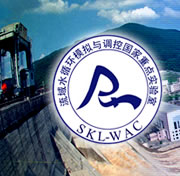《Journal of Water Resources Planning and Management》杂志刊登:
“水电开发和水库调度对湄公河流域Sekong河、Sesan河和Srepok河径流变化的影响评估”
作者:T. Piman, T. A. Cochrane, M.E. Arias, A. Green and N. D. Dat
刊物:《Journal of Water Resources Planning and Management》,2012年, 10.1061/(ASCE)WR.1943-5452.0000286
关键词:大坝;径流模拟;径流模式;水利发电;水文模型;湄公河;HEC-RESSIM;水库调度;亚洲
摘要:湄公河流域具有独特的生物多样性,它也承担着保障印度以及缅甸地区超过6千万人口粮食安全的重任。但是,由水电开发所引起的天然径流情势的变化却成了该系统健康运行过程中所要面临的主要风险。值得关注的是跨界河流Sekong河、Sesan河和Srepok河(3S)上正在以及即将修建的42座水坝。以上三个流域的径流量占湄公河年径流量的20%以上,同时它们对于下游洞里萨湖和湄公河三角洲生态系统也起着至关重要的作用。为了评估这种变化的大小,文章使用HEC ResSim和SWAT在一系列水库修建和运行的情景下对超过20年的日径流数据进行了模拟。在3S流域内修建新水库并且按照最大发电量情景运行会导致3S流域出口处的旱季流量提高63%,而雨季流量则减少22%。在该情景下水位的变化与由中国在湄公河上游修建水库大坝所导致的变化相类似,并且会显著高于文中提出的在湄公河干流下游修建11座大坝所引起的变化。而3S流域内支流上的一些水库则不会对季节性的径流情势产生很大的影响,这主要是因为它们大多数是径流式电站,其水库库容相对较小。小时尺度内的径流变化则主要是由于水库日常调度引起的,泥沙运动、水质和生物等方面则需要进行进一步的研究。为了合理的开发流域,减少对于季节性径流模式所造成的影响,保证下游生态系统可持续的发展,需要以战略的眼光选择坝址位置,并且由各国之间协作进行水库调度。
Assessment of flow changes from hydropower development and operations in Sekong, Sesan and Srepok Rivers of the Mekong Basin
Authors: T. Piman, T. A. Cochrane, M.E. Arias, A. Green and N. D. Dat
Journal:Journal of Water Resources Planning and Management, 2012. 10.1061/(ASCE)WR.1943-5452.0000286.
Key Words:Dam; Flow simulation; Flow pattern; Hydropower; Hydrologic model; Mekong; HEC-RESSIM; dam operations; Asia
Abstract:The Mekong River supports unique biodiversity and provides food security for over sixty million people in the Indo‐Burma region, but potential changes to natural flow patterns from hydropower development are a major risk to the wellbeing of this system. Of particular concern is the ongoing and future development of 42 dams in the transboundary Srepok, Sesan and Sekong (3S) Basin which contributes up to 20% of the Mekong's annual flows and provides critical ecosystem services to the downstream Tonle Sap Lake and the Mekong Delta. To assess the magnitude of potential changes, daily flows were simulated over 20 years using the HEC ResSim and SWAT models for a range of dam operations and development scenarios. A 63% increase in dry season flows and a 22% decrease in wet season flows at the outlet of the 3S Basin can result from the potential development of new dams in the main 3S Rivers under an operation scheme to maximize electricity production. Water level changes in the Mekong River from this scenario are comparable to changes induced by the current development of Chinese dams in the Upper Mekong Basin and are significantly higher than potential flow changes from the proposed 11 mainstream dams in the Lower Mekong Basin. Dams on the upper sub tributaries of the 3S Basin have very low impacts on seasonal flow regimes because most of those projects are run‐of‐river dams and have small reservoir storages. Impacts on hourly flow changes due to intra daily reservoir operations, sediment movement, water quality and ecology need further study. Strategic site selection and coordinated reservoir operations between countries are necessary to achieve an acceptable level of development in the basin and mitigate negative impacts to seasonal flow patterns which sustain downstream ecosystem productivity and livelihoods.
原文链接:http://ascelibrary.org/doi/abs/10.1061/%28ASCE%29WR.1943-5452.0000286?journalCode=jwrmd5
翻译:陈翔;审阅:高学睿

